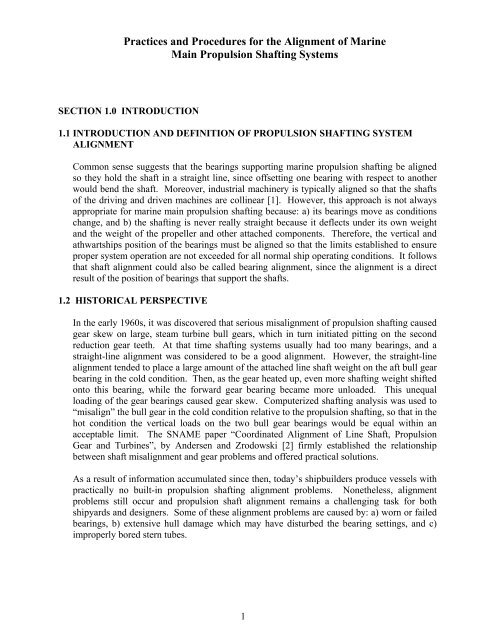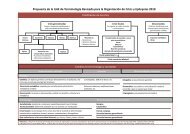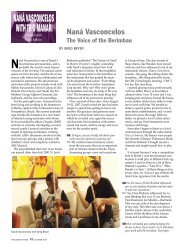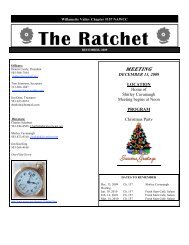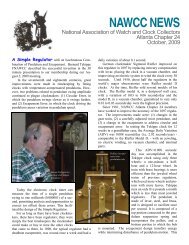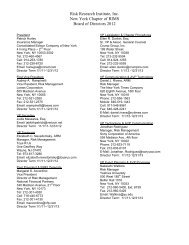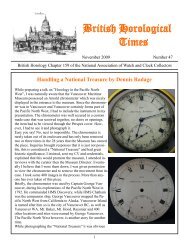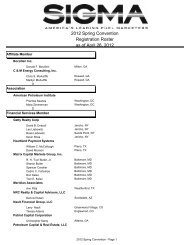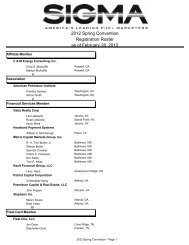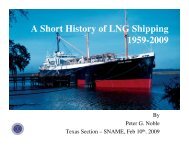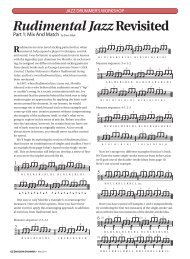Technical and Research Bulletin 3-51 - Amazon Web Services
Technical and Research Bulletin 3-51 - Amazon Web Services
Technical and Research Bulletin 3-51 - Amazon Web Services
You also want an ePaper? Increase the reach of your titles
YUMPU automatically turns print PDFs into web optimized ePapers that Google loves.
Practices <strong>and</strong> Procedures for the Alignment of Marine<br />
Main Propulsion Shafting Systems<br />
SECTION 1.0 INTRODUCTION<br />
1.1 INTRODUCTION AND DEFINITION OF PROPULSION SHAFTING SYSTEM<br />
ALIGNMENT<br />
Common sense suggests that the bearings supporting marine propulsion shafting be aligned<br />
so they hold the shaft in a straight line, since offsetting one bearing with respect to another<br />
would bend the shaft. Moreover, industrial machinery is typically aligned so that the shafts<br />
of the driving <strong>and</strong> driven machines are collinear [1]. However, this approach is not always<br />
appropriate for marine main propulsion shafting because: a) its bearings move as conditions<br />
change, <strong>and</strong> b) the shafting is never really straight because it deflects under its own weight<br />
<strong>and</strong> the weight of the propeller <strong>and</strong> other attached components. Therefore, the vertical <strong>and</strong><br />
athwartships position of the bearings must be aligned so that the limits established to ensure<br />
proper system operation are not exceeded for all normal ship operating conditions. It follows<br />
that shaft alignment could also be called bearing alignment, since the alignment is a direct<br />
result of the position of bearings that support the shafts.<br />
1.2 HISTORICAL PERSPECTIVE<br />
In the early 1960s, it was discovered that serious misalignment of propulsion shafting caused<br />
gear skew on large, steam turbine bull gears, which in turn initiated pitting on the second<br />
reduction gear teeth. At that time shafting systems usually had too many bearings, <strong>and</strong> a<br />
straight-line alignment was considered to be a good alignment. However, the straight-line<br />
alignment tended to place a large amount of the attached line shaft weight on the aft bull gear<br />
bearing in the cold condition. Then, as the gear heated up, even more shafting weight shifted<br />
onto this bearing, while the forward gear bearing became more unloaded. This unequal<br />
loading of the gear bearings caused gear skew. Computerized shafting analysis was used to<br />
“misalign” the bull gear in the cold condition relative to the propulsion shafting, so that in the<br />
hot condition the vertical loads on the two bull gear bearings would be equal within an<br />
acceptable limit. The SNAME paper “Coordinated Alignment of Line Shaft, Propulsion<br />
Gear <strong>and</strong> Turbines”, by Andersen <strong>and</strong> Zrodowski [2] firmly established the relationship<br />
between shaft misalignment <strong>and</strong> gear problems <strong>and</strong> offered practical solutions.<br />
As a result of information accumulated since then, today’s shipbuilders produce vessels with<br />
practically no built-in propulsion shafting alignment problems. Nonetheless, alignment<br />
problems still occur <strong>and</strong> propulsion shaft alignment remains a challenging task for both<br />
shipyards <strong>and</strong> designers. Some of these alignment problems are caused by: a) worn or failed<br />
bearings, b) extensive hull damage which may have disturbed the bearing settings, <strong>and</strong> c)<br />
improperly bored stern tubes.<br />
1


